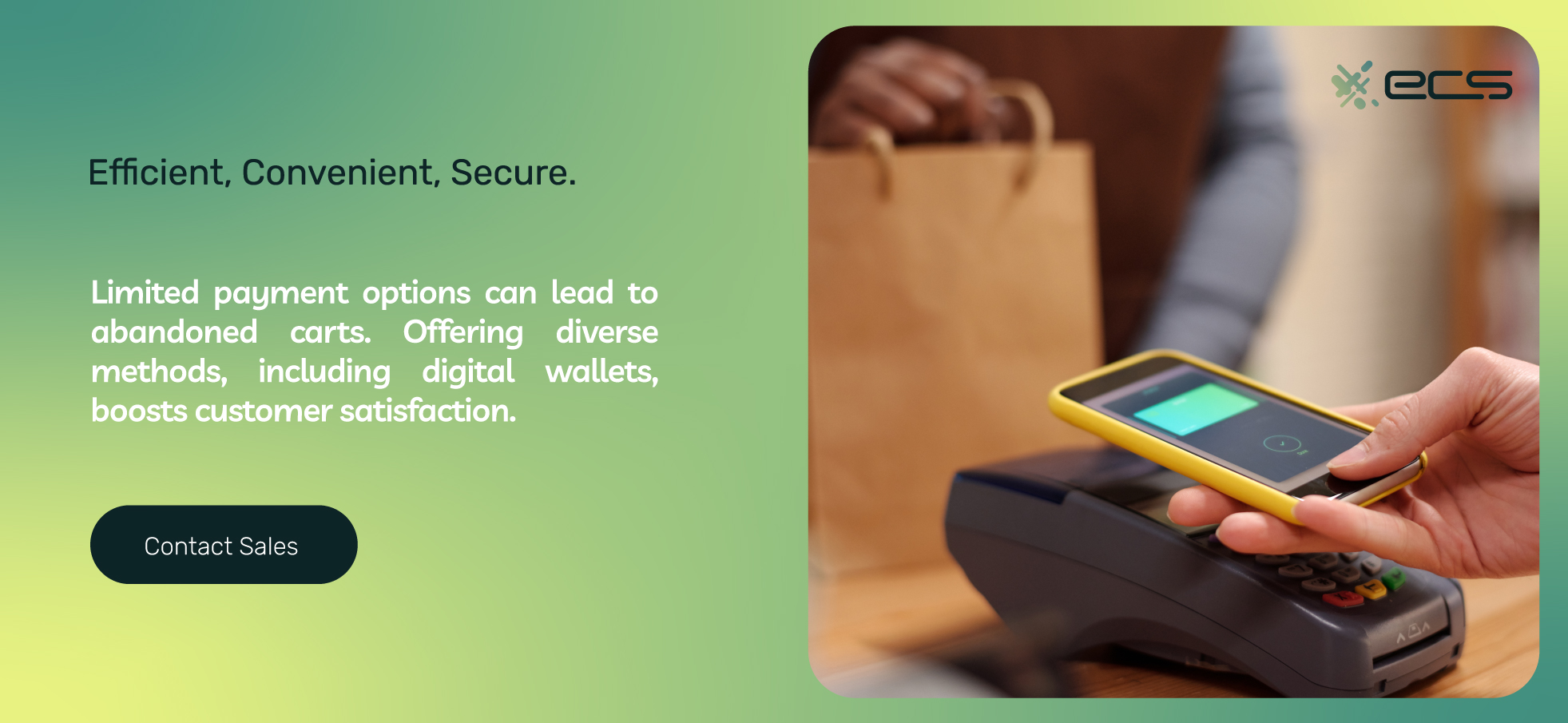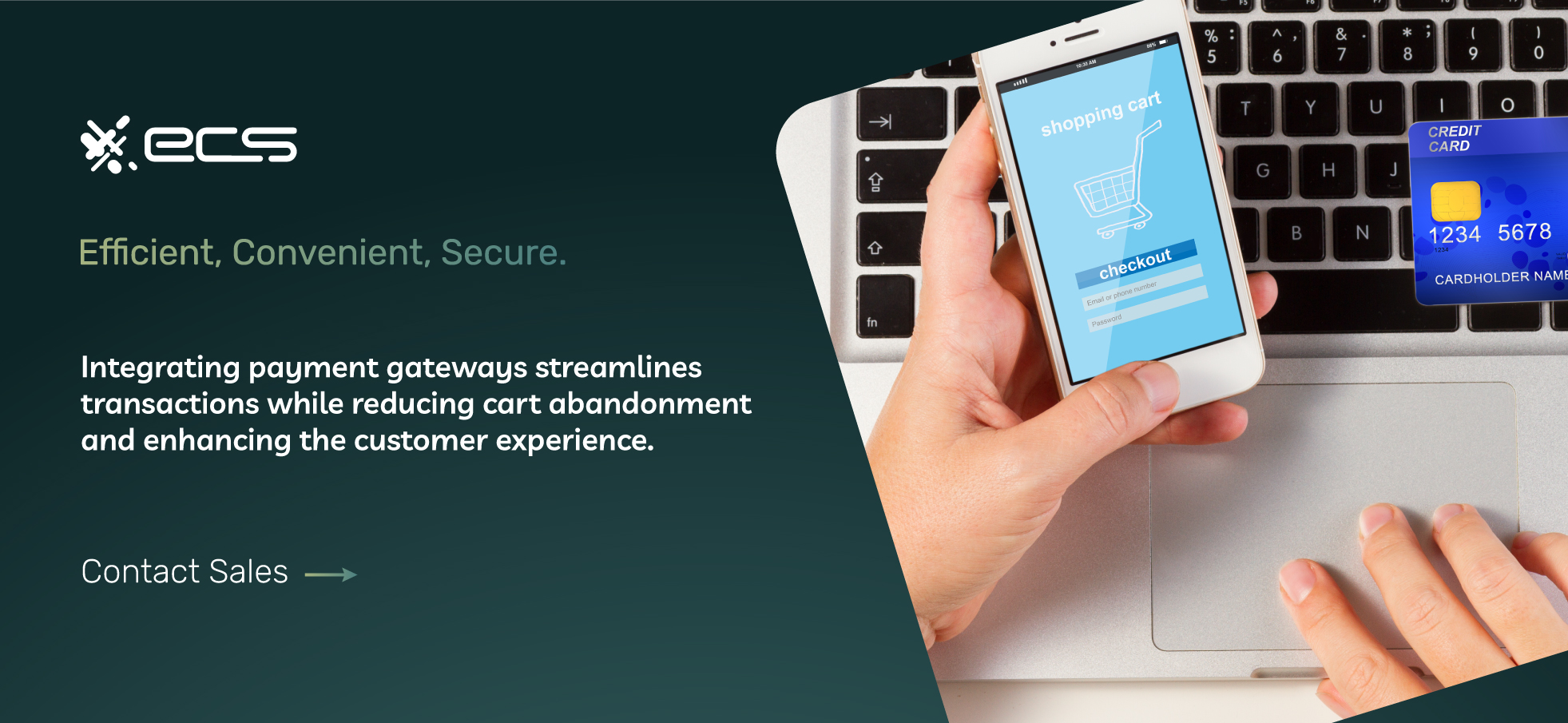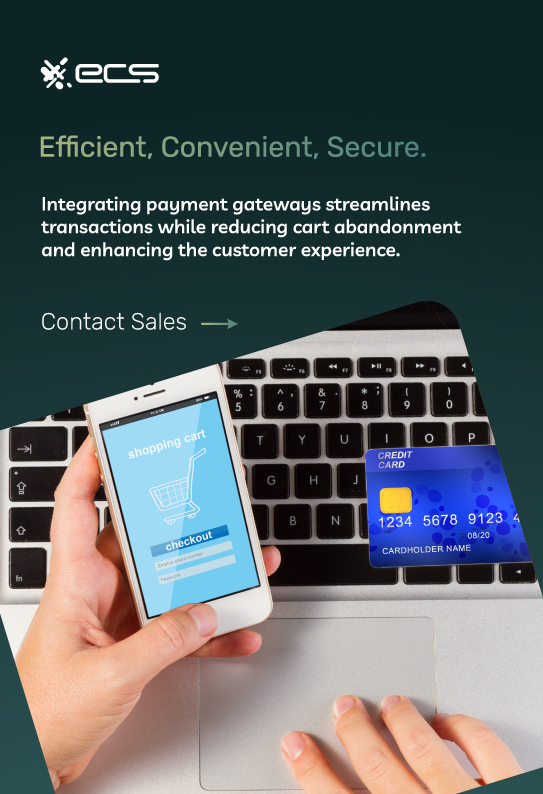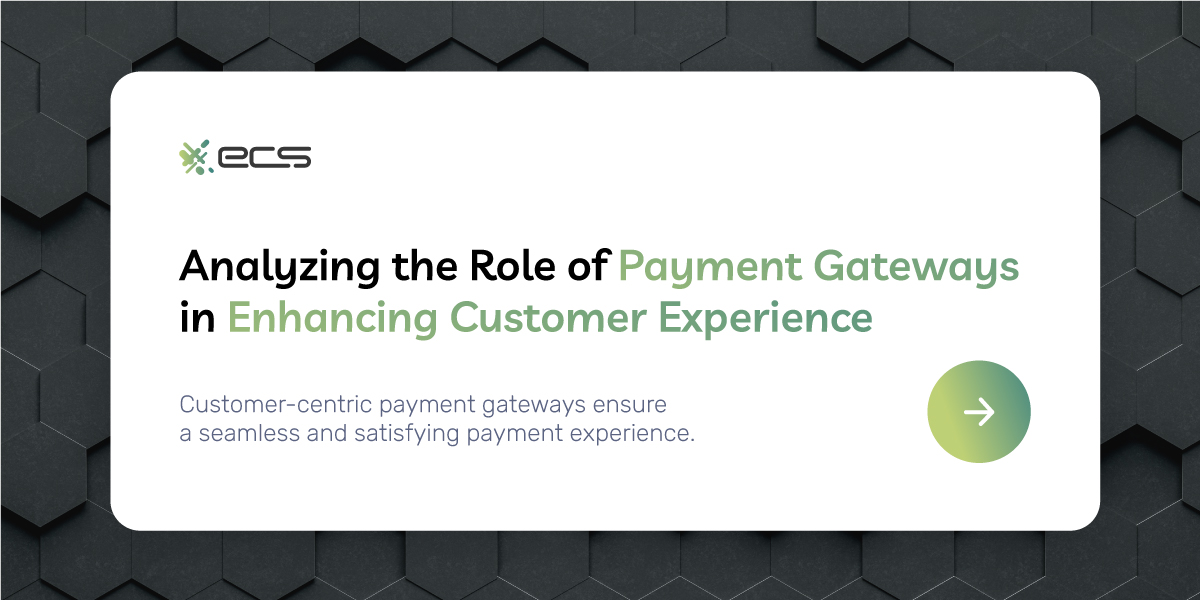As businesses try to differentiate themselves from the competition, the role of customer experience becomes one of the top areas to consider. Inflationary pressures have made it hard to compete on price alone. Therefore, businesses must find ways to add value beyond simply lowering prices or offering discounts.
The more value you can add to your offerings, the less price-sensitive your customers will likely be. One area of customer experience that is often overlooked is the role that payment processing and your payment gateway play in customers’ experiences when interacting with your company.
Accepting payments is the critical last step of the customer journey, as customers interact with your brand at various touchpoints. Mistakes in this area can undermine your efforts up until that point, resulting in lower conversions and higher acquiring costs.
To help you understand how a payment gateway can improve the customer experience, we’ll cover how payment gateways work and offer tips to help you achieve maximum payment gateway integration with your current business systems to improve the customer experience. These methods and strategies will help you improve UX with payment gateways so you can choose the right payment gateway for your business.
The Role Of A Payment Gateway
Many retailers and even e-commerce business owners may not be fully aware of how a payment gateway works. However, understanding this crucial part of payment processing helps to explain how the right payment gateway integration can improve customer experience.
By leveraging advanced features of payment gateways and e-commerce experience, businesses can streamline transactions, reduce cart abandonment, and enhance overall customer satisfaction.
Your payment gateway is essentially a conduit connecting all the different components of the payment processing network. When a transaction is initiated at your business, the transaction information flows along the gateway to your payment processor.
From your payment processor, the data moves through the credit card networks and ultimately to the cardholder’s issuing bank. The authorization result is sent back via the same channel to your payment terminal, POS system, or ecommerce platform.
In terms of your business, your entire payment workflow connects via the payment gateway. In essence, this means the more business systems you use that are integrated with your payment gateway, the more efficient your business is.

Payment Gateway Integration
When we talk about integration, we’re really talking about compatibility. This is whether or not your current business systems are compatible with various functions your payment gateway performs.
For example, does your accounting software integrate with your payment gateway so you can send invoices and payment links directly from your accounting platform?
Payment Gateway Features
In addition to integration possibilities, your payment gateway can improve customer experience through its various features. These features are often present, but not all businesses take advantage of them. Payment gateway features enhance UX by providing expanded payment options, ensuring seamless transactions, and offering robust security measures.
One example is expanded payment options for your customers. While you don’t have to accept every possible form of payment, you want to carefully consider adding the majority of popular payment options. You can easily lose customers because they couldn’t find the payment method they wanted to use. Some will start typing in their card number at checkout and then realize Discover is not a viable option.
Those customers often leave the site and never return. They may show up in your analytics as an abandoned shopping cart, but there won’t be any information regarding why they left. This is just one example of how not utilizing all of the features of your payment gateway can lead to a decline in your overall customer experience.
It is crucial to select the best payment gateway for customer satisfaction. This means choosing gateways that integrate seamlessly with your existing systems and offer robust support and features that align with your business’s needs.
Payment Issues That Can Hurt Customer Experience
A poorly implemented payment process can significantly detract from the customer experience. The checkout portion of the customer journey is just as important as all of the other brand touch points they experience before the final checkout or purchase. So businesses with lousy payment gateways customer experience declines.
Limited Payment Options
Limited payment options are probably the leading cause of a poor customer experience when checking out. However, this doesn’t just apply to e-commerce businesses.
Retail and service-oriented businesses can suffer from this same problem. In retail settings, customers expect more contactless options, such as digital wallet payments.
You should offer these options and use messaging within your store to inform customers that you accept popular digital wallets such as Apple Pay or Google.
Service businesses also need to consider whether they’re offering the right payment options for their customers. For example, mobile processing so customers can pay onsite immediately after work is performed by one of your service technicians. This avoids the need and the hassle of invoices that customers may not want.
Accepting a wide variety of payment options elevates your brand image. You position your company as one that adopts the latest technology and is always striving to improve.
Payment gateways and mobile user experience are integral to this perception, ensuring customers find the process seamless and convenient. Businesses with limited payment options can appear outdated or even give the impression they may be failing.
Payment Page Redirects
Payment page redirects usually involve using a hosted payment page or checkout page with an e-commerce platform. Hosted payment pages are pages hosted by a third party. Your customer is redirected to this page to enter their information and complete the checkout process.
Hosted payment pages can be useful in specific circumstances. However, you don’t want to rely on them as your main checkout option. Redirects during the checkout process can harm your customer experience by creating doubt about your site’s security and influencing payment gateway security perceptions. Payment gateways and customer trust often go hand in hand.
The irony is that hosted payment pages are actually extremely secure and offer many security features. However, most customers don’t understand these technical nuances and may not make informed decisions. So, when they get redirected, they may lose interest or trust and abandon the shopping cart.
Avoid using redirects during your checkout process. However, you can still use hosted payment pages for specific purposes, such as sending invoices or payment links to existing customers who already trust your business.


Declined Payments
Declined payments are very frustrating for customers and can mean a lost sale for your business. Some declined payments are for legitimate reasons, such as the customer simply not having enough funds to cover the purchase. However, your payment gateway could be flagging too many transactions as suspicious when there’s nothing actually wrong with the card.
Some payment gateway and gateway settings are far too strict, depending on your industry. If you’re in a relatively low-risk retail or e-commerce industry, there’s no need to use the same anti-fraud filters in your payment infrastructure as a high-risk merchant. Even if you’re selling high-risk products or services, you want to ensure you’re still allowing all legitimate transactions to go through.
If you notice an unusually high number of declines or sudden increases in declines, check your payment gateway’s fraud filtering and security settings. The impact of payment gateways on shopping cart abandonment can be significant.
Another option is to use a technique known as cascading payments. Cascading payments are usually reserved for high-risk processing in specific industries. If a transaction is denied, it is automatically rerouted to a different payment gateway or processor.
Cascading payments can improve your overall transaction approval rate without significantly harming your risk profile or increasing your chargebacks. They may also help lower transaction fees.
You can also ask your payment processor for help finding the right settings for your industry and risk profile.
Slow Checkout or a Checkout That Times-Out
This problem mostly affects e-commerce stores, and an improperly configured payment gateway can sometimes be the cause. Payment gateway speed and customer satisfaction are often related.
A slow checkout or confirmation during checkout can lead to customer frustration. It can also lead to double orders because the customer doesn’t know if the order went through, so they refresh the page and try again, resulting in a double order.
In the past, people were more tolerant of a slow-loading page here and there. But today, consumers are easily annoyed if a page doesn’t refresh or confirm their transaction in a few seconds.
Perform a test transaction on your website using various payment methods to see how it performs. The payment gateway is the last step in the checkout workflow, so if the confirmation results are slow to post back to your website, the payment gateway or the payment processor may be to blame.
If this is the case, contact your payment processor for assistance. If they can’t offer you a solution, you may need a new payment processor to help you choose a payment gateway.
ECS Payments is happy to demo everything we offer, including our payment solutions, gateways, integrations, and more. We even offer a complementary statement analysis to any merchant to discover where you could be saving on your processing fees.
Leveraging Your Payment Gateway To Improve Customer Experience
So far, we’ve covered some of the problems your payment gateway could be causing. But now we want to explain a few ways you can use your payment gateway to improve your overall customer experience. These tips can be used as payment gateway selection criteria for businesses in any industry.
Some of these tips will directly impact the way customers interact with your business. While others help you streamline your operations, which results in better customer service and personalization improvements.
Implement A Customer Portal
Implementing a customer portal can reduce friction with payment gateways, especially for recurring or subscription-based businesses. Secure payment gateways for better UX are crucial in such implementations, ensuring that customers have a seamless and reliable experience.
Beyond subscription and recurring businesses, service businesses or healthcare providers can also tremendously benefit from offering self-service payment options. Customers now demand more self-service options so they can manage their payments and other aspects of their spending with a brand.
However, the benefits are twofold, and they also help you as a merchant. A self-service customer portal for payments reduces your customer service inquiries and requests. Self-service saves you time and money so your staff can focus on high-level customer issues.
How To Implement A Customer Portal
There are several ways to implement a self-service portal, and many of these require no coding or minimal coding.
The first option is to check if your current e-commerce platform or shopping cart management software has this feature built-in. If so, you likely only need to connect your payment gateway and other business software to the platform via the API.
The second option is to use a third-party service. With a third-party service, you still connect your payment gateway and other software via an API, which is relatively easy.
A third-party service may give you more options to configure the portal exactly how you need it for your business purposes. Another benefit of third-party portal services is that they offer industry-specific portals. For example, healthcare businesses have specific security and privacy requirements that third-party services can help with.
Whichever method you use, your payment gateway is the key to this type of integration. If your current payment gateway and processor don’t offer this type of flexibility and access to the payment gateway API, you may need a new payment processor.
Payment Gateway Compliance And User Satisfaction With ECS Payments
ECS Payments outlines the steps you need to take to become PCI compliant. Our dedicated merchant services team can answer any of your questions and our in-house operation teams are managed under top-of-the-line security features to safeguard all sensitive information for you and your cardholders.
We ensure you know the steps to keep your payment gateways compliant. More compliance means less fraud. Less fraud means fewer chargebacks. Less Chargebacks means more money in your pocket.

Increase Payment Methods
Increasing payment method options is crucial for both e-commerce and retail sales. You should always monitor what payment methods are being used at your store so you can be proactive and respond to evolving customer trends. This goes beyond just credit and debit card sales.
With the rise of international transactions and global payments, the integration of local currencies through multicurrency payment gateways and global UX is becoming increasingly interconnected. Catering to a diverse customer base is vital, ensuring seamless and convenient payment experiences across different currencies and regions.
You can also break down these metrics via different sales channels. You will likely notice different trends across your different channels for online businesses. This allows you to tailor your initiatives more accurately to each customer segment.
If you notice an increasing number of alternative payment methods, you may want to capitalize on that trend by adding messaging on your checkout page or in-store.
Use Your Payment Gateway For Analytics
Analytics is one of the key areas you can leverage to improve customer experience. Analyzing customer feedback on payment gateways with analytics gives you insight into your customers and how they interact with your brand. This helps build customer loyalty through efficient payment gateways.
Your payment gateway captures a wealth of data, which can be unlocked by simply accessing it and exporting the data. This data can then be imported to a CRM, a spreadsheet, or dedicated analytics dashboard software.
Many payment gateways also have a basic analytics dashboard that allows you to view your statistics directly from the merchant interface. This is a great way to get an overview of your payment statistics. However, you will want to integrate this information with other metrics to gain real insight into your customers.
Below are some metrics to start with when analyzing your payment gateway analytics.
Transaction volumes and ticket amounts
These metrics are important for any business, and the average ticket amount can tell you how successful your marketing efforts are. If you recently made changes to the website or in-store messaging to boost cross-sales or upsells, then you should see this reflected in your average ticket amount.
Even if you haven’t changed your marketing efforts, a drop in the average ticket amount or other transaction data can indicate a problem. Spotting this problem early and making changes can head off a downturn in sales that leaves you with cash flow problems
Chargeback and Return Rates
Chargebacks are very expensive for merchants, and your chargeback ratio is a critical measurement when setting your risk profile and processing rates.
You can use your gateway analytics to closely monitor your chargebacks and make changes before you run into any problems. If you notice an increase in chargebacks, you want to dig deeper and look for additional metrics that can show any correlation.
For example, is there a certain payment type making up the new chargebacks? Another possibility is that they are all from the same product category or country.
Managing chargebacks as soon as an issue arises can save you considerable money. You can also make a more surgical change to your processing instead of a blanket increase in your fraud detection filters.
Making blanket changes across every transaction can result in false positives, which means more declines and unhappy customers.
Is Your Payment Gateway Holding Your Business Back?
Many of the improvements needed to enhance the customer experience revolve around your payment system. If it’s lacking, you may have difficulty making the changes necessary to stay competitive.
Below are some signs that it’s time to consider a new payment processor or payment gateway.
Lack of Integration Options
Payment gateway integration and customer experience are intertwined, especially in e-commerce businesses. The more of your business software that your gateway integrates with, the more options you have to streamline your business and improve your custom experience.
If you are having compatibility issues or simply can’t integrate your payment gateway with your core business systems, it’s time to look for a new option. User-friendly payment gateway interfaces make many integrations much easier and often require no coding or technical knowledge.
Some businesses may not realize there are choices when it comes to their payment gateway and payment processor. Changing your payment gateway is also relatively easy and generally only requires you to change your login and gateway credentials for certain apps.
High Fees
You might be paying higher fees than you need to if you‘ve used the same payment gateway and processor from when you first started. Higher fees have to be passed on to your customers, which is never good for the customer experience.
It’s possible that your transaction volumes and other factors have changed since you first implemented your current payment gateway. You may qualify for lower processing fees that could add up to significant savings over the course of a year.
You may also be able to save money by choosing a different payment processing fee structure based on your current sales and payment methods.
If your business has changed, you should check to see that your current payment processing solution is still a good fit.

Poor Service
Perhaps you’ve already tried to implement some of these improvements but have had some difficulty. If your payment gateway or processor was unresponsive and unable to solve your technical problems, that’s a warning sign. Small businesses need a payment processor and gateway to offer technical support in case they don’t have a dedicated IT staff in-house.
If you’re not getting the support you need to integrate your payment gateway with your other systems, it’s time to switch to a more responsive provider. Selecting a payment gateway and processor that better suits your business can have a significant positive impact.
Slow Processing Speeds
If your e-commerce checkout is slow, your payment gateway may be to blame. Slow processing detracts from the customer experience and can even cause customers to lose trust in your brand.
If you’ve ruled out other reasons for a slow checkout, such as your website host, the problem may be with your payment gateway and its API. Switching payment gateways is relatively easy, and if it speeds up your site’s performance, you’ll improve the customer experience.
The Future Of Payment Gateways In Enhancing UX
As gateways evolve, retailers and e-commerce businesses will have more options for offering services to their customers. Merchants need to be flexible and ready to accept these trends in payment gateway technology.
Payment gateway innovations for improved UX are being developed faster than ever. New customizable payment gateways for businesses offer new integration options.
New integrations can improve payment gateway and ecommerce experiences. Enhancing checkouts with payment gateways is just one area to improve.
Learn More About Payment Gateways And How They Can Improve Your Business
If you’ve experienced any of the above issues with your payment gateway, it may be time for an upgrade.
At ECS Payments, we offer merchants access to several different payment gateways to match their needs and existing software. Our in-house technical support team can also help you integrate your payment gateway with your website or retail POS system.
Contact ECS Payments today with any questions you have about upgrading your payment gateway or payment processing.
Frequently Asked Questions About Payment Gateways And Their Role in Customer Experience
By implementing customer-centric payment gateway solutions, businesses can ensure a seamless and satisfying customer payment process.
Yes. A merchant account holds funds received from digital payments. Any digital payment from a payment gateway will settle into your merchant account, which differs from a business bank account.
Yes. A payment gateway is software that authorizes and processes credit and debit card transactions. A payment processor is a company that provides the infrastructure and technology to process credit card and debit card transactions through your payment gateway.
An optimized payment gateway can improve the customer experience by making the checkout process faster, easier, and more secure. It can also provide customers with more payment options and track their orders.
When choosing a payment gateway, consider the cost, features, security, and customer support. Additionally, make sure the gateway is compatible with your existing systems.
